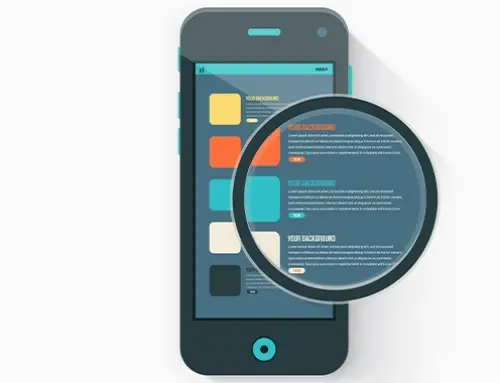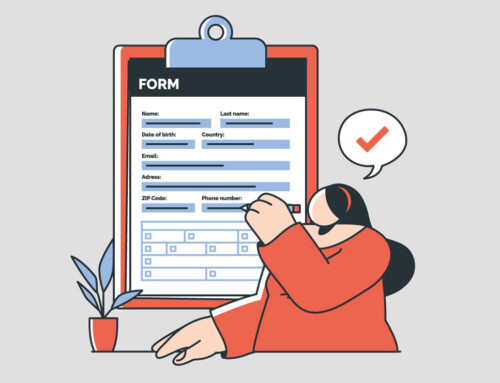Contents
Law firms mostly deal with confidential information from their customers. Thus, they may face some liabilities in that respect. To address this issue, they need to have some terms and conditions to inform their clients about the firm’s purposes and what they do with the data. Here, a well-crafted confidential email disclaimer can inform the clients under which conditions the firm has no responsibility.
What Is a Confidential Email Disclaimer?
A confidential email disclaimer is a short, legally oriented notice included in emails to communicate the sensitive nature of the message’s contents. It typically outlines expectations for how the information should be handled and provides instructions in case the email is received in error. This confidentiality statement ensures that recipients understand their obligation to protect private or sensitive information. Disclaimers are particularly valuable in industries such as law, healthcare, and finance, where maintaining data privacy is essential. This guide provides relevant disclaimer examples that can be adapted to a specific professional to further clarify their structure and purpose.
Why Are Confidential Email Disclaimers Important?
A confidential email disclaimer is critical in ensuring the security and proper handling of sensitive information shared via email. Its inclusion helps organizations mitigate legal risks and reinforce the importance of data privacy in professional communications. Below are three critical reasons why these disclaimers are essential.
I. Protecting Sensitive Information
Adding a confidentiality statement to your emails emphasizes handling sensitive information with care. It alerts recipients to the message’s private nature and reminds them of their obligations regarding its use.
II. Reducing Legal Risks
A confidential email disclaimer can prevent potential legal issues. By clearly defining the terms for handling confidential information, the sender reduces liability risk if the data is misused or shared without authorization.
III. Ensuring Professionalism and Compliance
Email disclaimers enhance the professionalism of your communications and help ensure compliance with privacy laws and regulations. Reviewing disclaimer examples from your industry can guide you in creating statements that align with legal requirements and organizational policies.

Legal Implications of Not Using a Confidential Email Disclaimer
The absence of a confidential email disclaimer can expose organizations to significant legal risks, mainly when sensitive or proprietary information is involved. Email disclaimers are essential for limiting liability and protecting data privacy, especially in industries subject to stringent regulatory requirements. Below are three critical legal implications for failing to include a disclaimer in professional communications.
I. Non-Compliance with Privacy Laws
Many industries operate under strict privacy regulations, such as HIPAA for healthcare, GDPR for businesses handling personal data, or PIPEDA for businesses handling personal data. Organizations may inadvertently violate these regulations without a proper confidentiality statement, leading to fines or legal disputes.
II. Increased Liability Risks
A confidential email disclaimer helps establish the sender’s intent to safeguard sensitive information and provides a foundation for legal defense in case of accidental disclosure. Failing to include one leaves the sender vulnerable to lawsuits and reputational damage.
III. Loss of Data Protection Safeguards
The absence of disclaimers removes a critical layer of data protection. Reviewing disclaimer examples from similar organizations can demonstrate how effective disclaimers mitigate risks and strengthen compliance with legal standards.
Key Elements of an Effective Confidential Email Disclaimer
Crafting a confidential email disclaimer requires attention to clarity, precision, and relevance to ensure it serves its intended purpose. Effective disclaimers not only communicate the sensitive nature of the email but also provide clear instructions for unintended recipients. Below are the essential elements that make a confidentiality disclaimer effective.
I. Clear and Concise Language
The language used in a confidentiality statement must be simple, direct, and easy to understand. Avoid overly complex legal jargon, confusing recipients, and diluting the impact of the disclaimer. Clarity ensures that the intended message is communicated effectively.
II. Actionable Instructions
A practical, confidential email disclaimer includes specific guidance on recipients’ actions if they are not the intended audience. This typically involves notifying the sender and deleting the email. These instructions ensure quick rectification in cases of accidental receipt.
III. Legal and Contextual Relevance
The disclaimer should be tailored to align with industry standards and legal requirements. Reviewing disclaimer examples from similar sectors can provide insight into crafting disclaimers that address your organization’s needs. For further guidance, you can explore email disclaimer best practices resources or learn about email compliance requirements.
By including these essential elements, organizations can ensure that their disclaimers protect sensitive communications and support compliance efforts.
How to Write a Confidential Email Disclaimer
A confidential email disclaimer must be carefully written to communicate essential information clearly and effectively. A poorly worded disclaimer can confuse recipients and fail to meet legal or professional standards. Below are detailed steps to guide the creation of a strong email disclaimer.
I. Focus on Clarity and Brevity
The language used in a confidentiality statement should be simple, concise, and free of unnecessary jargon. The goal is to convey critical information about the confidentiality of the email while making it accessible to all recipients. A lengthy or overly technical disclaimer may discourage readers from understanding and adhering to its content.
II. Specify Handling Instructions
A practical, confidential email disclaimer should include clear instructions for unintended recipients. This typically involves requesting that the recipient notify the sender about the error and delete the email without sharing its contents. This step ensures the email confidentiality is maintained even in cases of accidental distribution.
III. Align with Legal and Professional Standards
Tailor the disclaimer to align with your organization’s needs, industry standards, and legal requirements. This is particularly important in healthcare, legal, or finance sectors, where privacy laws are stringent. Reviewing disclaimer examples from similar industries can help refine the language and ensure compliance with applicable regulations.
Following these steps, you can craft an email disclaimer that protects sensitive communications, minimizes legal risks, and reinforces your organization’s commitment to confidentiality.
Where to Add a Confidential Email Disclaimer
Placing a confidential email disclaimer is just as important as its content. Ensuring the disclaimer is included in the right parts of your email communication helps protect sensitive information and establish clear expectations for recipients. Below are the key areas where disclaimers should be added.
I. Email Signatures
Embedding the confidentiality statement into email signatures is the most efficient way to ensure consistent inclusion. All outgoing emails automatically carry the required notice by adding the disclaimer to the default signature template. This approach is efficient for organizations with multiple employees, as it standardizes communication.
II. Specific Email Content
For emails that contain highly sensitive or proprietary information, including the confidential email disclaimer at the top of the email body ensures it is immediately visible to recipients. This approach reinforces the importance of the content’s confidentiality and reduces the risk of accidental misuse.
III. Company-Wide Automation
Organizations can use email management tools to automate the inclusion of disclaimers across all email communications. This ensures that every employee uses the exact standardized text, reducing inconsistencies. Reviewing disclaimer examples used by other companies can help design a system that fits your organization’s specific needs.
By strategically placing disclaimers in these areas, organizations can enhance email security practices and ensure all communications are protected under clear and consistent terms. RunSensible automatically integrates disclaimers into email signatures, guaranteeing that every message from your team has a professional and compliant notice.
Examples of Confidential Email Disclaimers
Including an adequately worded confidential email disclaimer in your communications demonstrates your commitment to maintaining confidentiality and protecting sensitive information. While the structure and wording may vary depending on the industry and context, universal principles guide their creation. Below are several disclaimer examples illustrating how they can be tailored to meet specific needs.
I. General Email Disclaimer
A general disclaimer works well for organizations that handle a variety of communications, providing a broad yet clear confidentiality statement suitable for most scenarios. For example:
“This email and any attachments are intended solely for the use of the individual or entity to which they are addressed. They may contain confidential and/or privileged information. If you have received this email in error, please notify the sender immediately and delete all copies of the email and its attachments. Any unauthorized review, use, disclosure, or distribution is prohibited.”
II. Legal Industry Disclaimer
Law firms and professionals often deal with sensitive client information that requires explicit protection. A disclaimer for this industry emphasizes legal privilege and confidentiality. For example:
“This email contains privileged attorney-client information and is intended solely for the use of the intended recipient. Unauthorized disclosure or use of this email is strictly prohibited. If you are not the intended recipient, please notify the sender immediately and permanently delete this email from your system.”
III. Healthcare Industry Disclaimer
Healthcare professionals must comply with regulations such as HIPAA, making it essential to include disclaimers that address protected health information. For example:
“This email may contain protected health information (PHI) intended only for the recipient named above. If you are not the intended recipient, please notify the sender immediately and delete this email. Any unauthorized use, disclosure, or copying of this email is strictly prohibited and may be subject to legal action.”
IV. Financial Services Disclaimer
Financial organizations often use disclaimers to safeguard sensitive financial data and comply with industry regulations. For example:
“This communication is confidential and may contain proprietary or legally privileged information. If you are not the intended recipient, please notify the sender immediately and delete this email. Unauthorized use, disclosure, or distribution is prohibited and may result in legal consequences.”
V. Custom Industry-Specific Disclaimer
Organizations in unique industries can craft disclaimers to meet their specific regulatory or professional needs, drawing inspiration from other disclaimer examples while tailoring the language. For example:
“This email is confidential and may include sensitive information relevant to [specific industry]. If you have received this email in error, please contact the sender immediately and remove it from your system. Disclosure or use by an unauthorized person is strictly prohibited.”
By using these examples as a guide, organizations can ensure that their confidential email disclaimer is transparent, professional, and aligned with their specific communication requirements.
Safeguard Communications with the Right Disclaimer
A well-crafted confidential email disclaimer is vital for protecting sensitive information and minimizing legal risks in professional communication. By clearly stating the terms of confidentiality, disclaimers help establish boundaries for how email content should be handled. Including a confidentiality statement in all communications reinforces professional ethics, demonstrates compliance with privacy regulations, and builds trust with clients and stakeholders.
Reviewing disclaimer examples can provide valuable insights into crafting effective and industry-appropriate disclaimers. A robust confidential email disclaimer strengthens organizational security for general use or is tailored to specific fields such as law, healthcare, or finance. By integrating these disclaimers thoughtfully, organizations can protect their communications while maintaining professionalism and trust.
Optimize Your Law Firm Workflow with RunSensible’s Cutting-Edge Features
RunSensible is an all-in-one legal practice management platform designed to enhance efficiency and productivity for law firms. It simplifies client intake and lead management with customizable forms and automated follow-ups, streamlines document creation and e-signatures, and fosters strong client relationships through its CRM tools. The platform also offers robust case management, including scheduling, workflow automation, and billing features like invoicing, trust accounting, and online payments. RunSensible also integrates secure cloud storage with real-time collaboration and ensures seamless client communication with integrated phone systems. Consolidating these tools reduces administrative tasks, allowing law firms to focus on client service and success.
FAQs
1. Are email disclaimers legally binding?
Email disclaimers are not always legally binding but can help establish intent and provide a layer of protection in legal disputes. Their enforceability depends on the jurisdiction and the specific circumstances of the case.
2. Do I need a disclaimer for every email?
Not every email requires a disclaimer, but it is good practice to include one in all professional communications, especially for industries handling sensitive data like healthcare, law, or finance.
3. Can email disclaimers prevent accidental data breaches?
While disclaimers cannot prevent accidental breaches, they guide recipients and reduce legal risks by clarifying the sender’s expectations for handling the information.
4. What is the best length for an email disclaimer?
An email disclaimer should be concise yet comprehensive. Aim for a brief statement that communicates confidentiality without overwhelming the recipient.
Disclaimer: The content provided on this blog is for informational purposes only and does not constitute legal, financial, or professional advice.







